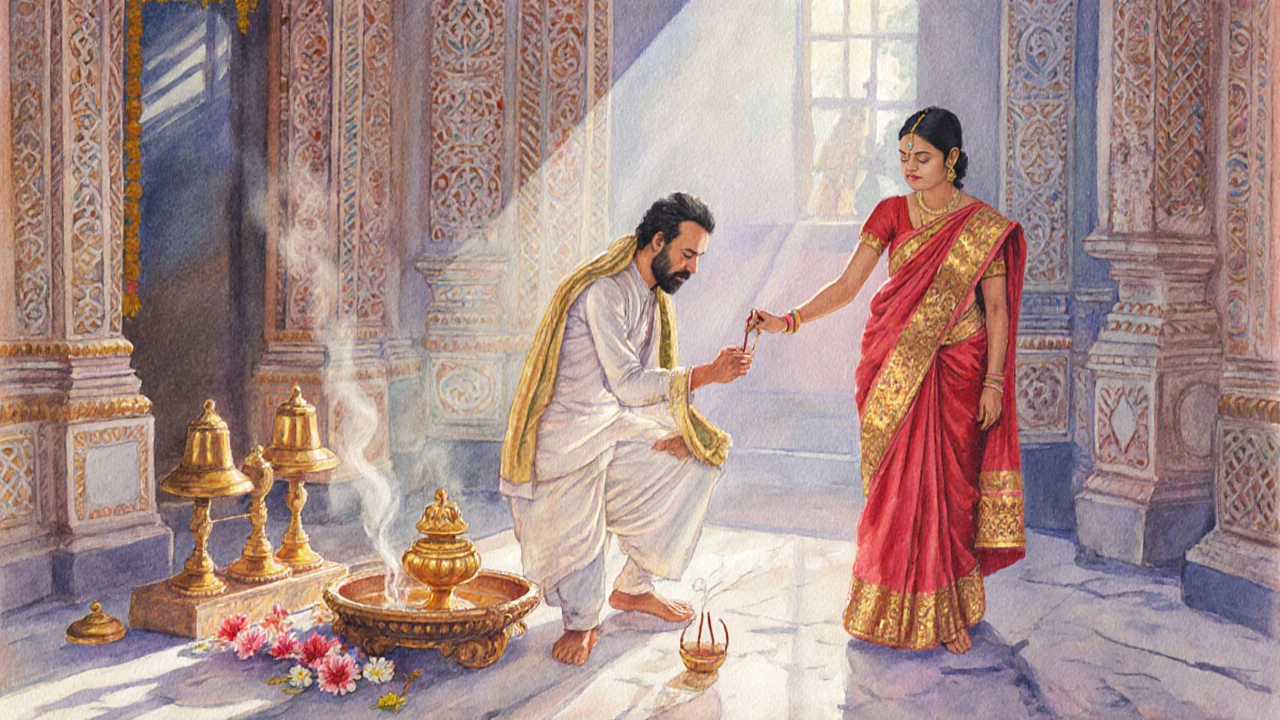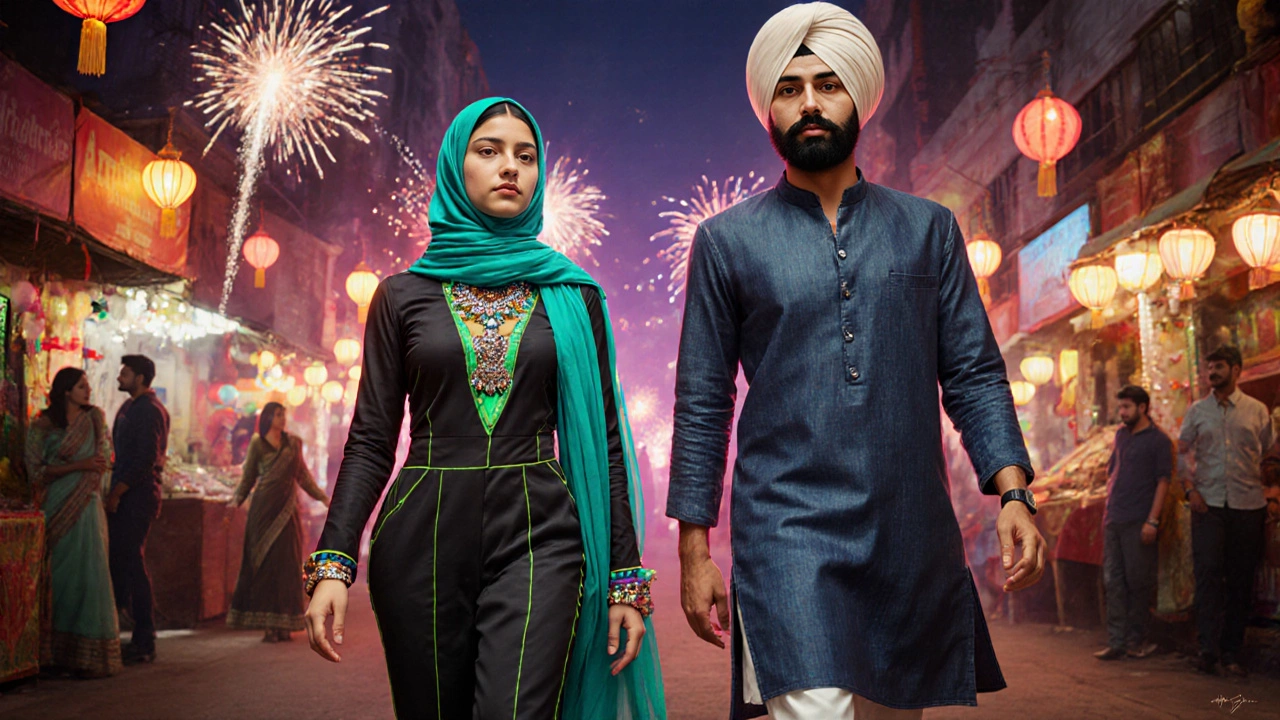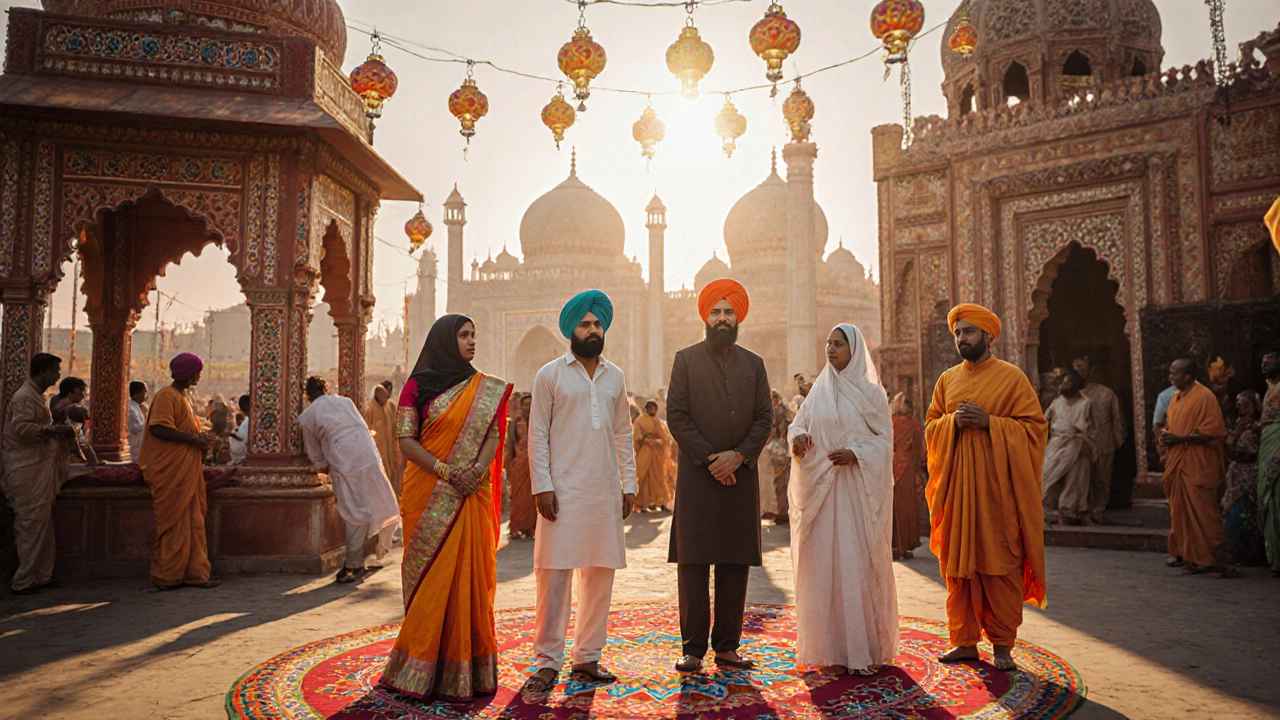When you picture India, a kaleidoscope of colors, festivals, and diverse customs instantly comes to mind. One of the most vivid expressions of that diversity is the way people dress for their faith. From the flowing drapes of a sari to the modest wrap of a hijab, each religion has woven its own style into the fabric of everyday life. In this guide we’ll explore the main religious dress traditions across the subcontinent, break down the key pieces for men and women, and show how history, climate, and culture shape what Indians wear to worship.
What Counts as Indian religious dress?
Simply put, Indian religious dress refers to the clothing styles, accessories, and headgear that are traditionally worn by followers of a particular faith during worship, festivals, or daily life in India. These garments are not just fashion choices; they signal respect for sacred customs, convey community identity, and often follow scriptural guidelines. While modern fashion blends elements from different traditions, many faithful still prefer the classic looks that have been handed down for generations.
Hindu Attire: The Heartbeat of Indian Tradition
Hinduism, the oldest major religion in India, offers a rich tapestry of dress codes that vary by region, caste, and occasion. For daily worship, many Hindus opt for simple, comfortable clothing that allows easy movement for rituals like puja.
- Sari - The quintessential female garment, usually six to nine yards of fabric wrapped elegantly around the body. Traditional colors like saffron, red, and gold are popular for festivals and temple visits.
- Salwarkameez - A two‑piece outfit consisting of a tunic (kameez) and loose trousers (salwar). It’s especially common in North India for both everyday wear and religious gatherings.
- Dhoti - A rectangular piece of cloth draped around the waist and legs, often worn by men during temple ceremonies, especially in the South.
- Kurta - A straight‑cut shirt that pairs well with a pajama or churidar. Light cotton or silk versions are favored for sunrise aarti (prayer).
Head coverings for Hindu women, such as the dupatta, are used during prayer to cover the head, showing humility before the divine.
Muslim Clothing in India: Modesty Meets Elegance
India hosts one of the world’s largest Muslim populations, and their dress code emphasizes modesty while allowing for regional flair.
- Hijab - A headscarf that covers the hair and neck, often paired with a modest blouse and long skirt or salwar.
- Shalwarkameez - Similar to the Hindu version but usually features deeper colors and intricate embroidery, especially for weddings and Eid celebrations.
- Kurtapaijama - A comfortable two‑piece outfit for men, often made of linen or cotton for daily prayers and more lavish silk versions for special occasions.
- Jama - A traditional long coat worn during festive occasions in parts of North India, especially in Kashmir.
During Friday prayers (Jumu’ah), many men don a simple white or cream kurta, while women may wear a full-length abaya over their shalwarkameez.
Sikh Dress: Pride in the Turban
Sikhism, founded in the Punjab region, has distinct attire that reflects the faith’s emphasis on equality and bravery.
- Turban (Dastar) - Worn by Sikh men (and increasingly by women) to cover the uncut hair (kesh). Colors can indicate personal preference, community, or even marital status.
- Kurtapajama - Usually made of robust cotton or silk, often with a short jacket called a ‘Patiala’ for formal occasions.
- Kara - A steel or iron bracelet worn on the wrist, symbolizing a connection to God; while not clothing, it’s a mandatory article of faith.
- Churidar - Tight-fitting trousers that pair with a longer kurta for temple visits.
Women may wear a simple salwarkameez with a dupatta, but some choose to adopt the turban for personal or ceremonial reasons.

Christian Attire: Simplicity and Seasonal Festivity
Christians in India, though a minority, have adapted local clothing into their church services and celebrations.
- White saree or salwarkameez - Worn by women especially during Christmas or Easter services, reflecting purity and joy.
- Kurta with a detachable collar - Preferred by men in many South Indian churches, offering a formal yet comfortable look.
- Stoles - Often made of silk, draped over the shoulders of clergy during mass; they carry liturgical colors like purple for Lent or red for Pentecost.
While there’s no strict dress code, modesty and neatness are valued, and many congregants choose traditional Indian garments over Western suits.
Buddhist and Jain Dress: Minimalist and Symbolic
Both Buddhism and Jainism encourage simplicity, which reflects in their adherents’ clothing.
- White cotton dhoti for men - Signifies purity; often worn by monks during meditation or temple visits.
- Simple cotton saree for women - Usually white or light earth tones, sometimes with a plain border.
- Robe or ‘chivara’ for Buddhist monks - Usually saffron or maroon, indicating the monastic order.
- Jain ascetics wear simple white cloth, emphasizing detachment from materialism.
In lay communities, modest daily wear (kurta, plain shirts, simple skirts) is common during religious observances.
Comparing the Major Faiths: What to Wear When
| Religion | Male Attire | Female Attire | Key Items |
|---|---|---|---|
| Hindu | Dhoti or kurta‑paijama | Sari or salwar‑kameez | Dupatta, sandal wood bangles |
| Muslim | Kurta‑paijama or jama | Hijab with shalwar‑kameez | Hijab, modest skirt |
| Sikh | Turban, kurta‑pajama | Salwar‑kameez with dupatta | Turban, kara |
| Christian | Kurta, optional collar | White saree or salwar‑kameez | Stole (clergy), modest colors |
| Buddhist / Jain | Plain dhoti or kurta | Simple cotton saree | Robe for monks, white cloth |
These patterns are guidelines, not hard rules. India’s regional climates, from the chilly Himalayas to the humid coastlines, also influence fabric choices-wool for the north, silk or cotton for the south.

How Modern Fashion Interacts with Tradition
Today’s designers blend traditional motifs with contemporary cuts. You’ll see a sari‑style jumpsuit, a kurta made from stretch denim, or a hijab in neon colors. While the core idea-showing respect for faith-remains, many younger Indians adapt the look to fit their urban lifestyle. Still, during major festivals like Diwali, Eid, or Vaisakhi, the classic garments re‑appear in full force, reminding everyone of the deep cultural roots.
Tips for Visitors: Dressing Respectfully at Indian Holy Sites
- Cover your shoulders and knees. A lightweight scarf or a simple pair of trousers works everywhere.
- If entering a Sikh gurdwara, remove shoes and cover your head. A plain scarf will do if you don’t own a turban.
- For Hindu temples, avoid bright red or black clothing during certain rituals; neutral tones are safest.
- In mosques, women should wear a hijab or any head covering and loose clothing that doesn’t cling.
- Christians often welcome modest Western attire, but a modest sari adds a respectful local touch.
When in doubt, ask a local or observe what the regular worshippers are wearing. Most places appreciate genuine effort more than perfect conformity.
Preserving the Legacy: Why Religious Dress Matters
Beyond aesthetics, these garments are living archives of centuries‑old values. The turban tells a story of bravery and equality; the sari’s drape echoes centuries of artistic evolution; the hijab’s modest fold reflects a commitment to humility. Supporting artisans who make these clothes-whether it’s hand‑loom weavers in Varanasi or embroiderers in Lucknow-helps keep the tradition alive and provides livelihoods across the country.
Frequently Asked Questions
What is the most common dress for Hindu men during puja?
A simple dhoti or a light cotton kurta paired with pajama is most common. It allows freedom of movement for ritual gestures.
Do Muslim women have to wear a hijab in India?
Wearing a hijab is a personal choice and varies by community. In mosques and during Friday prayers, most women cover their hair, but it isn’t legally required.
Can I wear a regular Western shirt to a Sikh gurdwara?
Yes, as long as you cover your head with a scarf and remove shoes. The key is modesty and respect.
What color is considered inauspicious for women at Hindu temples?
Black is generally avoided for temple visits; white, pastel, or bright festive colors are preferred.
How do Buddhist monks differ in dress from lay followers?
Monks wear a plain saffron or maroon robe called a chivara, while lay people wear simple white or earth‑tone cotton garments during visits.
